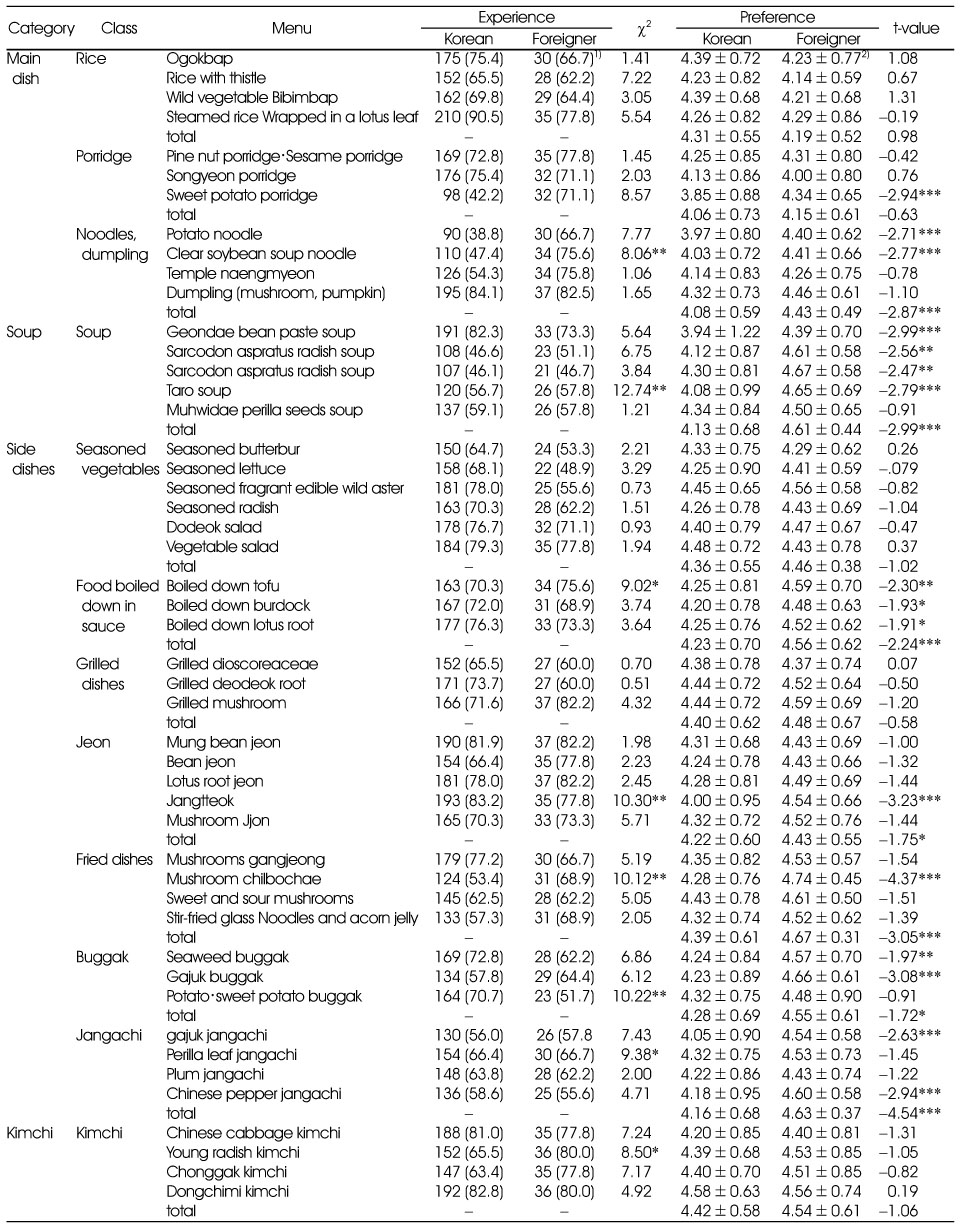A Study on Recognition, Preference and Popularization of Temple Food - Among Local and Foreign Restaurant Visitors
Article information
Abstract
Objectives
This study was conducted to identify factors that influence the consumption of temple food and to find systematic methods improving the popularization of temple food.
Methods
A self-administered questionnaire was applied to 304 temple food restaurant visitors, including 232 local and 72 foreign individuals. The questionnaire was designed to investigate recognition, consumption, preference and popularization of temple food among restaurant visitors.
Results
The study population consisted of 30.6% men, 69.4% women. 76.3% were Korean while 23.7% were foreigners. The responses on their impression on temple food contained the words, “vegetarian” (4.64), “plain and familiar” (4.19), and “good for dieting” (4.16). The most commont reason to favor temple food was its “mild taste” (63.0%) in the local group while foreigners preferred it because it is “good for health” (35.8%). The preferred kind of side dish of the local group was roasted dish (4.40), stir-fried dish (4.39), blanched vegetables (4.36), and food boiled with sauce (4.23); foreigner's high preference was for stir-fried (4.67), Jangachi (4.63), food boiled with sauce (4.56), and Buggak (4.55).. Most respondents thought that it is necessary to maintain the traditional form of temple food. While 43.5 percent of Koreans responded that “the five pungent vegetables” could be allowed, 62.8 percent of foreign respondents said it is permissible.
Conclusions
A systematic approach to improve the temple food that reflects both foreign and local preference while maintaining its originality is necessary for its globalization. Furthermore, restaurants specialized in temple food should be expanded and promoted through effective marketing strategies that would make the cuisine easily accessible and spread throughout the world.





